CSSL/NTP assists NWS with rating historic EF5 tornado in US
After weeks of engineering analysis, informed largely by a new technique developed by Western University’s Canadian Severe Storms Laboratory (CSSL), a tornado that hit Enderlin, North Dakota this summer has been officially rated EF5 by the US National Weather Service (NWS), the highest category on the Enhanced Fujita (EF) scale.
This historic rating was made possible through the application of cutting-edge research by researchers at the Northern Tornadoes Project (NTP), which provided the scientific foundation for confirming wind speeds exceeding 210 mph (338 km/h).
The NWS reports that this EF5 tornado is the first of its kind in the United States since the Moore, Oklahoma tornado in 2013 and ties the EF wind speed record with the 2011 El Reno, Oklahoma tornado.
“This case exemplifies the importance of integrating engineering analysis and scientific research into operational meteorology,” said Connell Miller, director of the Northern Mesonet Project and former NTP wind impacts researcher. “Our work demonstrates that extreme wind events can be reliably assessed using forensic evidence to improve wind speed estimates in tornadoes.”
A violent tornado tore through southeast North Dakota on June 20, 2025, leaving a 12.1-mile (19.5 km) path of devastation up to 1.05 miles (1.7 km) wide. Initial assessments by NWS suggested high-end EF3 damage but lacked sufficient EF Scale damage indicators to justify a higher rating.
The Enderlin tornado derailed 33 train cars, including multiple fully loaded grain hoppers weighing about 286,000 pounds (129,700 kg) each. One empty tanker car, weighing roughly 72,000 pounds (32,600 kg), was lofted more than 145 metres from the tracks.
To estimate the wind speeds required to cause this level of displacement, experts applied findings from a peer-reviewed study led by Miller, published in the journal Monthly Weather Review in 2024, titled “Estimating Wind Speeds in Tornadoes Using Debris Trajectories of Large Compact Objects” (https://doi.org/10.1175/MWR-D-23-0251.1).
This novel research established that lofting large compact objects more than 50 metres generally indicates EF5-level winds. In Enderlin, a fully loaded tanker car (nearly four times heavier than the heaviest object modeled in the Miller study) was thrown almost three times farther than the EF5 threshold distance.
Calculations on the Enderlin train car confirmed wind speeds well exceeding the EF5 threshold. These findings were instrumental in confirming the tornado’s EF5 rating, despite the absence of traditional EF-scale damage indicators.
“The National Westher Service’s use of this research underscores its significance for future tornado assessments, offering a powerful new tool for rating storms that produce extreme yet unconventional damage,” said Miller. “CSSL and NTP remain committed to advancing tornado science and supporting operational meteorology through innovative engineering methodologies.”
For more information on the Enderlin, ND tornado, the US NWS has provided a backgrounder that can be found here: https://www.weather.gov/media/fgf/Enderlin.pdf
The photos below of the tornado damage to the train are used with permission.
====
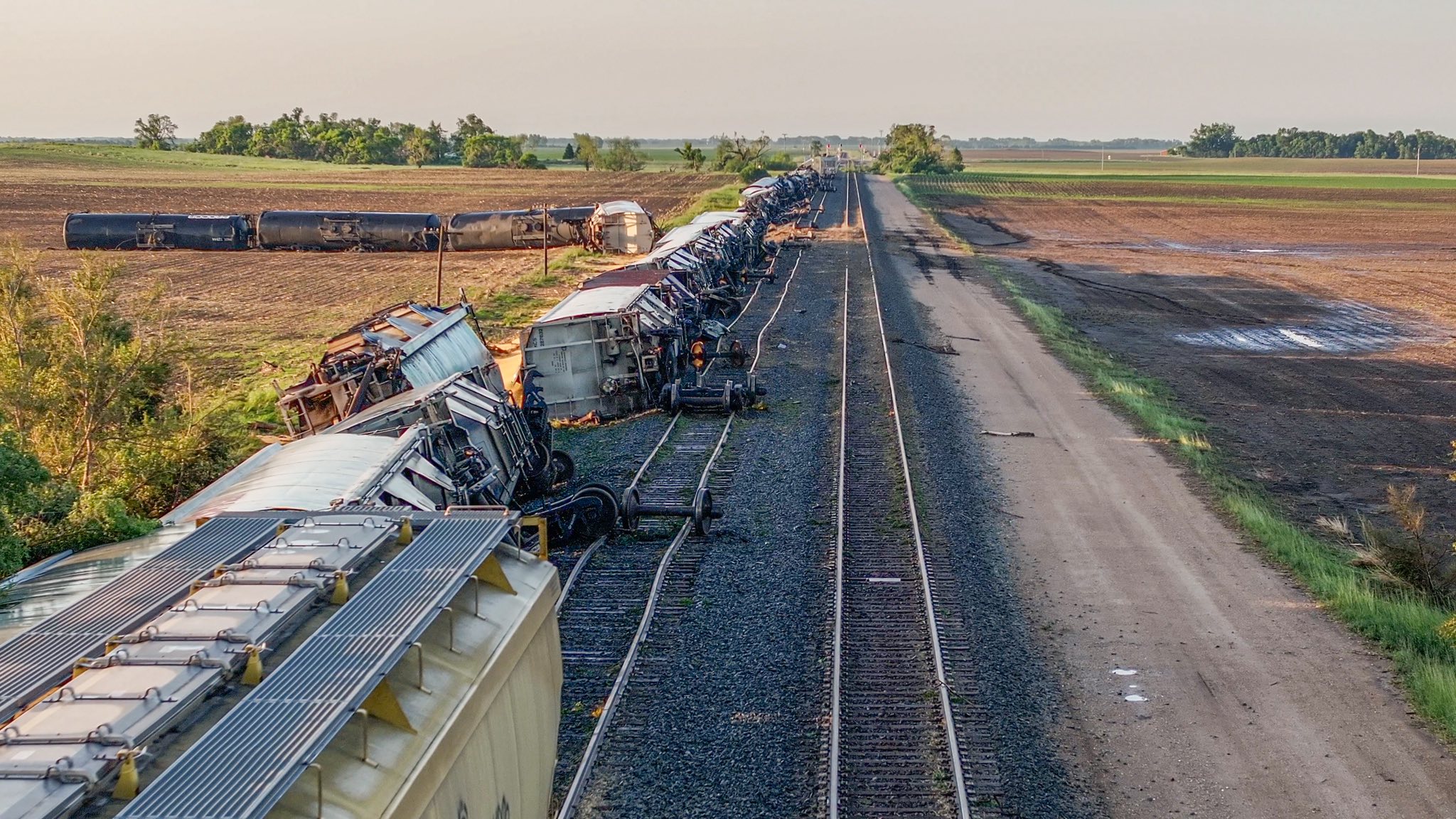
View down the tracks of full grain cars overturned, empty tanker cars lofted downwind, and railroad tracks bent by the force of the tornado. Image courtesy Brian Emfinger.
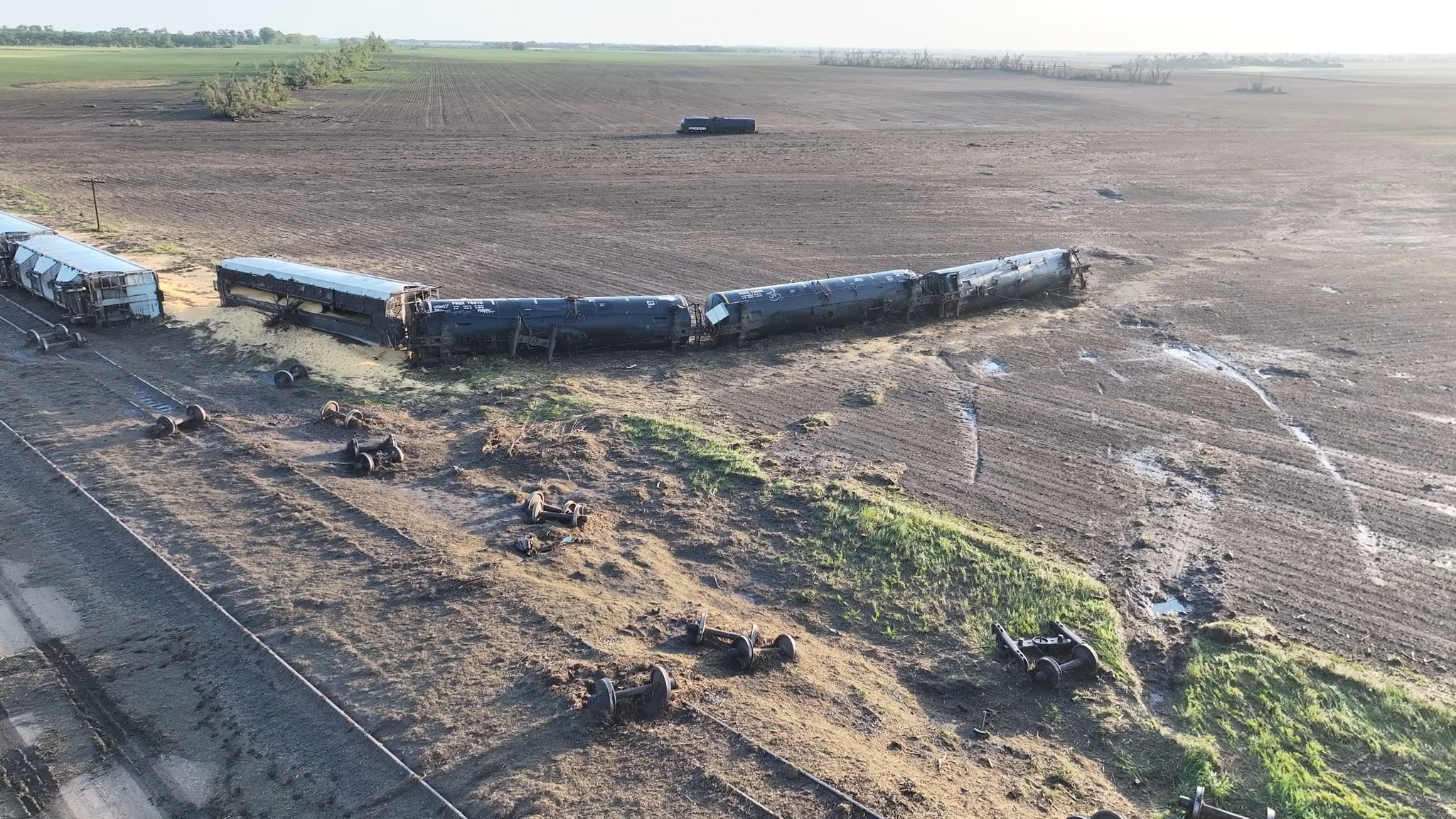
Train cars overturned, with four tanker cars lifted off the track. The fourth tanker car can be seen in the distance. The tanker cars appear to be aligned with the cyclonic flow pattern of the tornado. Image courtesy Brian Emfinger.
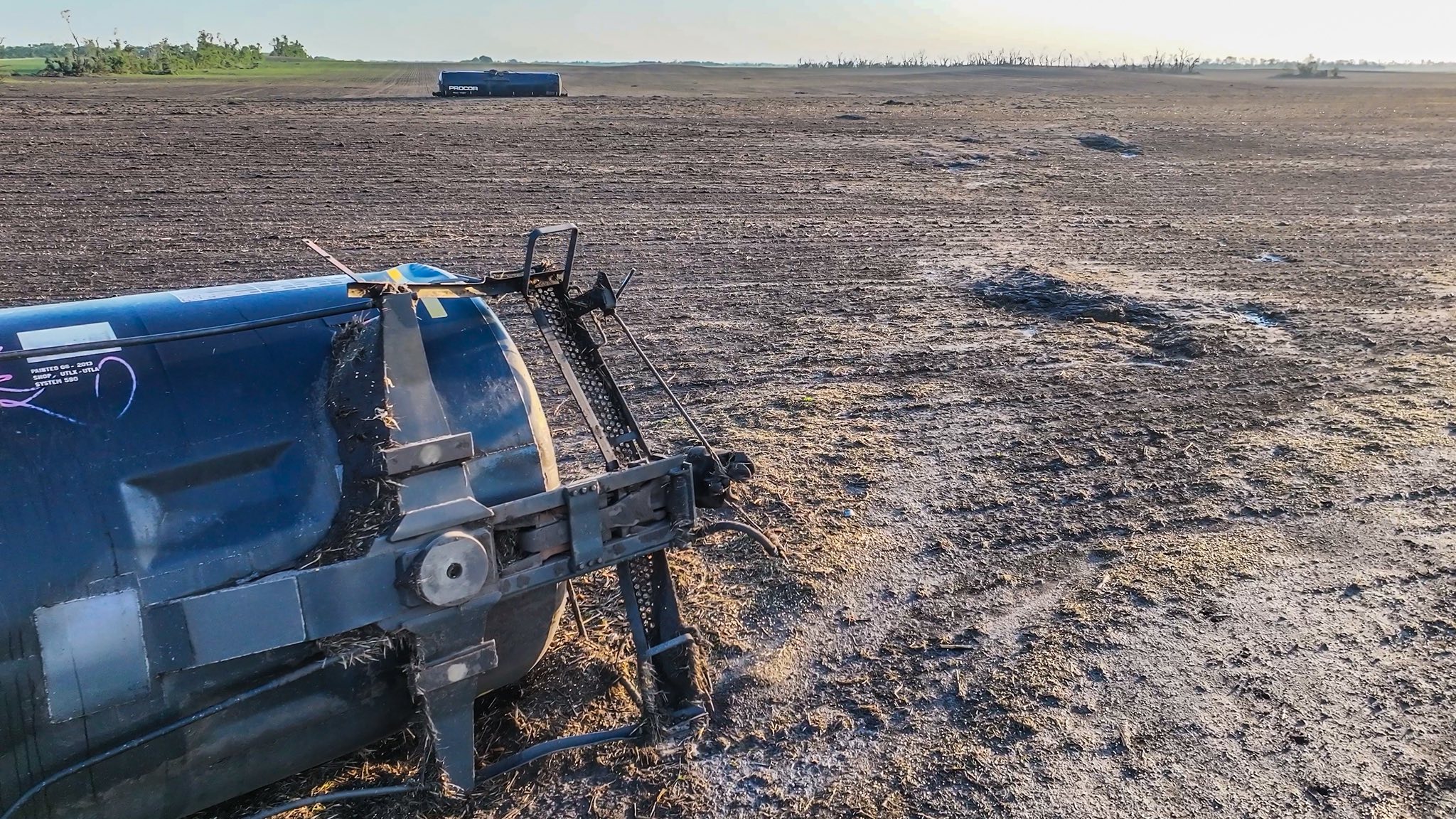
A close-up of the last two tanker cars. Image courtesy Brian Emfinger.
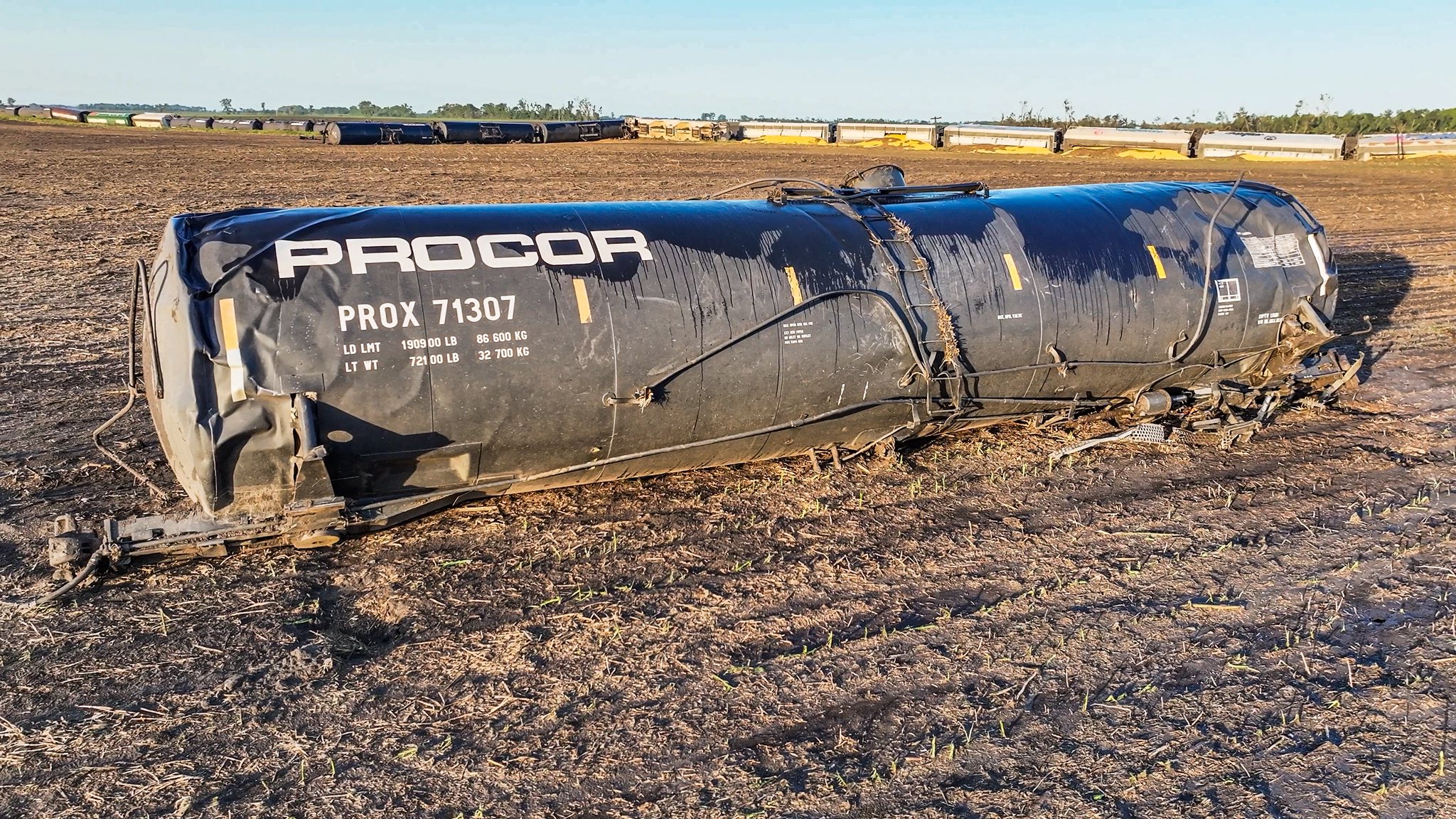
A close-up of the fourth tanker car that was lofted and ended up 145 m away. Image courtesy Brian Emfinger.
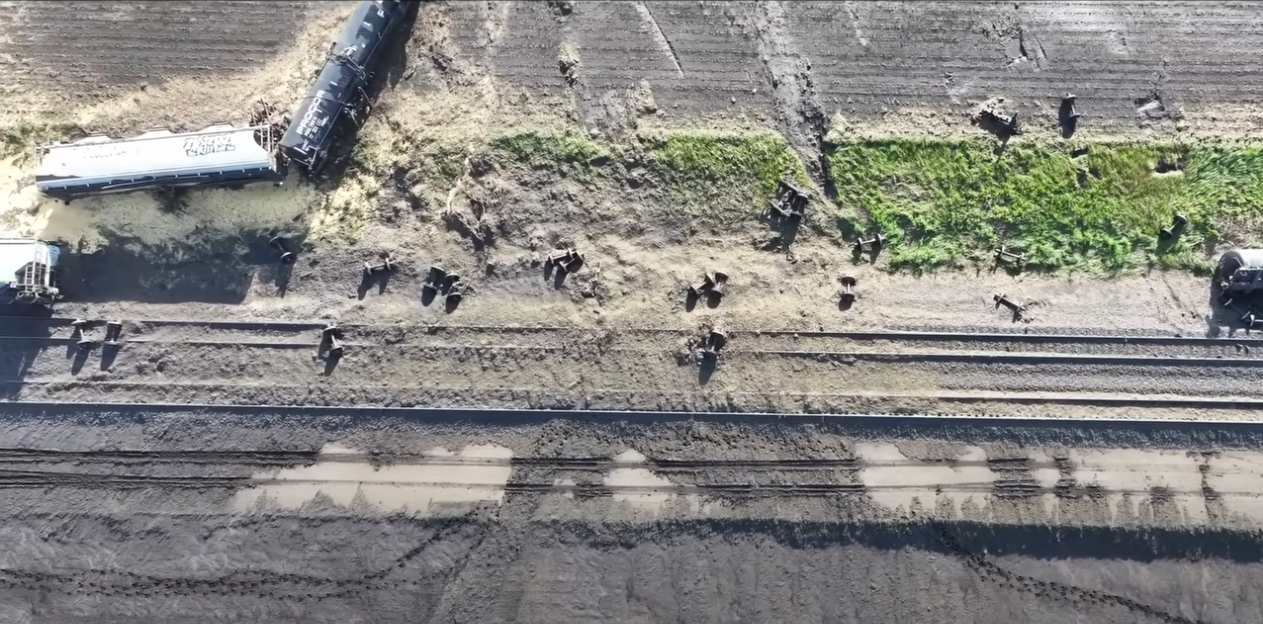
Drone nadir view of the original location of the tanker cars, with wheels left behind and railroad tracks filled with dirt and debris. Image courtesy Aaron Rigsby.
